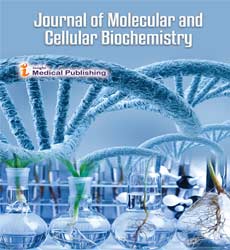Nanotechnology and the Drug Delivery to the Cancerous Cell
Mohamed Rashed *
Department of Biochemistry, King Saud University Medical City, Riyadh, Saudi Arabia
- *Corresponding Author:
- Mohamed Rashed
Department of Biochemistry, King Saud University Medical City, Riyadh, Saudi Arabia
E-mail: Rashedm@au.edu.sa
Received Date: September 6, 2021; Accepted Date: September 20, 2021; Published Date: September 27, 2021
Citation: Rashed M (2021) Nanotechnology and the Drug Delivery to the Cancerous Cell. J Mol Cell Biochem Vol. 5 No.4:2.
Description
In the medical profession, cancer remains an intractable disease. Chemotherapy is the most common cancer treatment. Chemotherapy medicines, on the other hand, cause systemic toxicity and drug resistance, which increases the failure rate. Cancer is one of the world's most deadly diseases, claiming the lives of millions of people each year. It is one of the most serious health issues of the twenty-first century, as it has no bounds and may damage any organ of individuals in any location. Cancer, defined as uncontrolled cell growth with little or no apoptosis, necessitates a lengthy and complicated therapeutic approach.
Because of complexity on genetic and phenotypic levels, it displays clinical variety and therapy resistance. A range of techniques are being employed for the treatment of cancer each of which has some substantial limits and adverse effects. Surgical removal, chemotherapy, radiation, and hormone therapy are all options for cancer treatment. Chemotherapy is a popular treatment that provides anticancer medicines systemically to patients in order to stop malignant cells from proliferating uncontrollably. Unfortunately, numerous side effects develop as a result of anticancer medicines' nonspecific targeting, and inadequate drug delivery of those agents fails to achieve the desired result in the majority of cases.
The creation of cancer drugs is a lengthy process involving advanced polymer chemistry and electrical engineering. Nanotechnology is a branch of science that works with particles ranging in size from a few nanometres (nm) to several hundred nanometers (nm), depending on their intended application. Over the last decade, there has been a lot of interest in creating precise drug delivery systems since it has a lot of advantages over traditional formulations. Because it can infiltrate tissues at the molecular level, it has great promise in both cancer detection and therapy. Cancer nanotechnology is being examined and used in cancer treatment with zeal, signalling a major breakthrough in detection, diagnosis, and treatment of the disease.
Therapeutic drugs are currently being developed using nanoparticles to help them get through biologic barriers, mediate molecular interactions, and detect molecular changes. In comparison to macro particles, they have a greater surface area with changeable optical, electrical, magnetic, and biologic characteristics. Liposomes, polymeric micelles, dendrimers, nanospheres, nanocapsules, and nanotubes are some of the current nanotechnology-based drug delivery methods for cancer therapy that are already on the market or are being researched and evaluated.
Nanoparticles may be programmed to target certain cells using different changes such as altering their size, shape, chemical and physical characteristics, and so on. They have the ability to actively or passively target neoplastic cells.
Nanoparticles containing chemotherapeutic drugs are constructed in such a way that they engage directly with the defective cells in active targeting. Nanoparticles can potentially be used to target cancer in a passive manner. When malignant cells halt apoptosis, they continue sucking nutrients unnaturally via the blood vessels, causing angiogenesis to develop broad, leaky blood capillaries around the cells. Nanoparticles can be directed to a specific region of the capillary endothelium in order to concentrate the medication within a specific organ and perforate tumor cells via passive diffusion or convection.
Conclusion
The diffusion process is aided by the lack of lymphatic drainage. Nanotechnology has already transformed cancer treatment in many ways and is radically altering the treatment pattern. It has had a significant influence on selective cancer cell recognition, targeted drug administration, and overcoming the limits of traditional chemotherapies. Because cancer is one of the most deadly illnesses, nanotechnology's contribution to precision therapy while avoiding life-threatening side effects has the potential to contribute to a favourable shift in clinical practice toward a life-saving strategy.
Open Access Journals
- Aquaculture & Veterinary Science
- Chemistry & Chemical Sciences
- Clinical Sciences
- Engineering
- General Science
- Genetics & Molecular Biology
- Health Care & Nursing
- Immunology & Microbiology
- Materials Science
- Mathematics & Physics
- Medical Sciences
- Neurology & Psychiatry
- Oncology & Cancer Science
- Pharmaceutical Sciences
